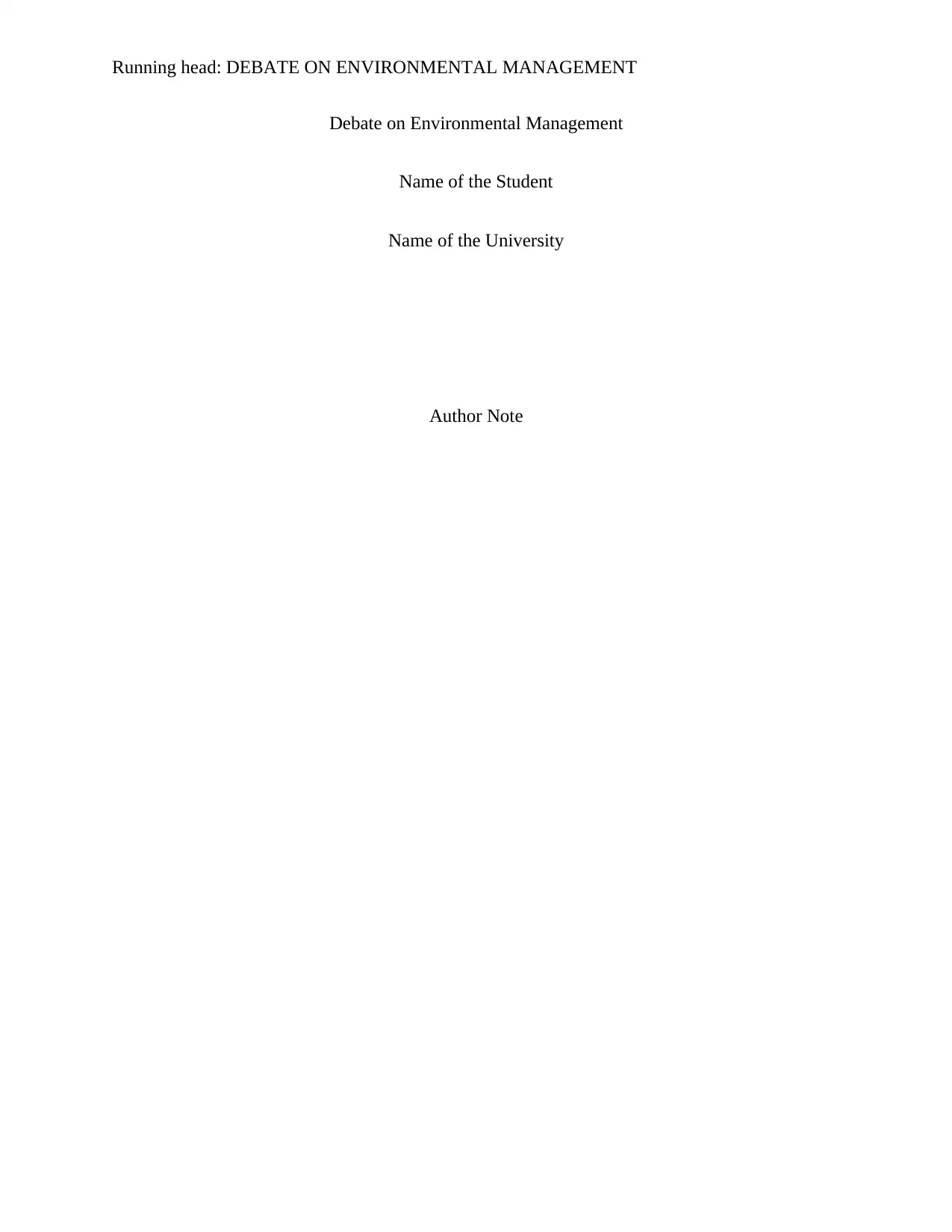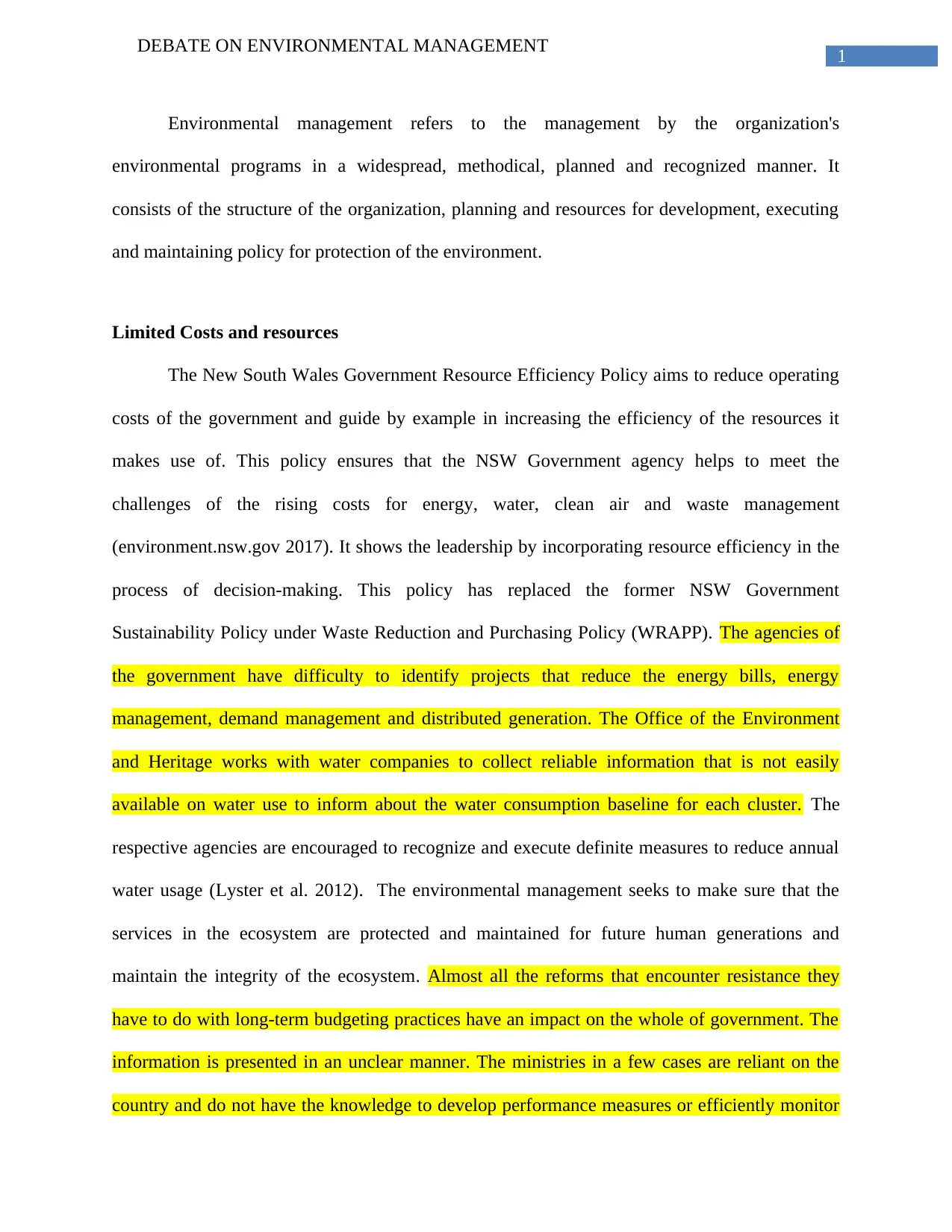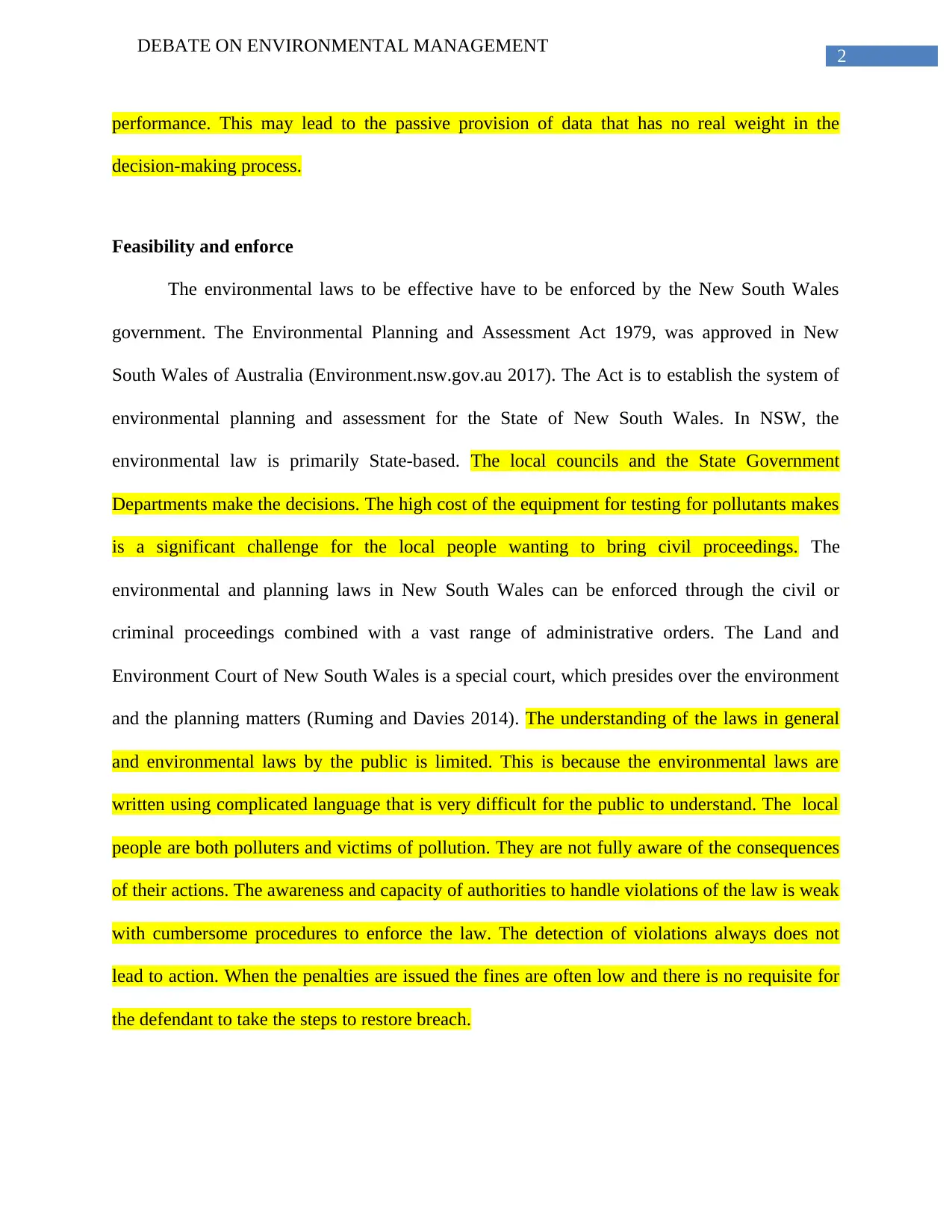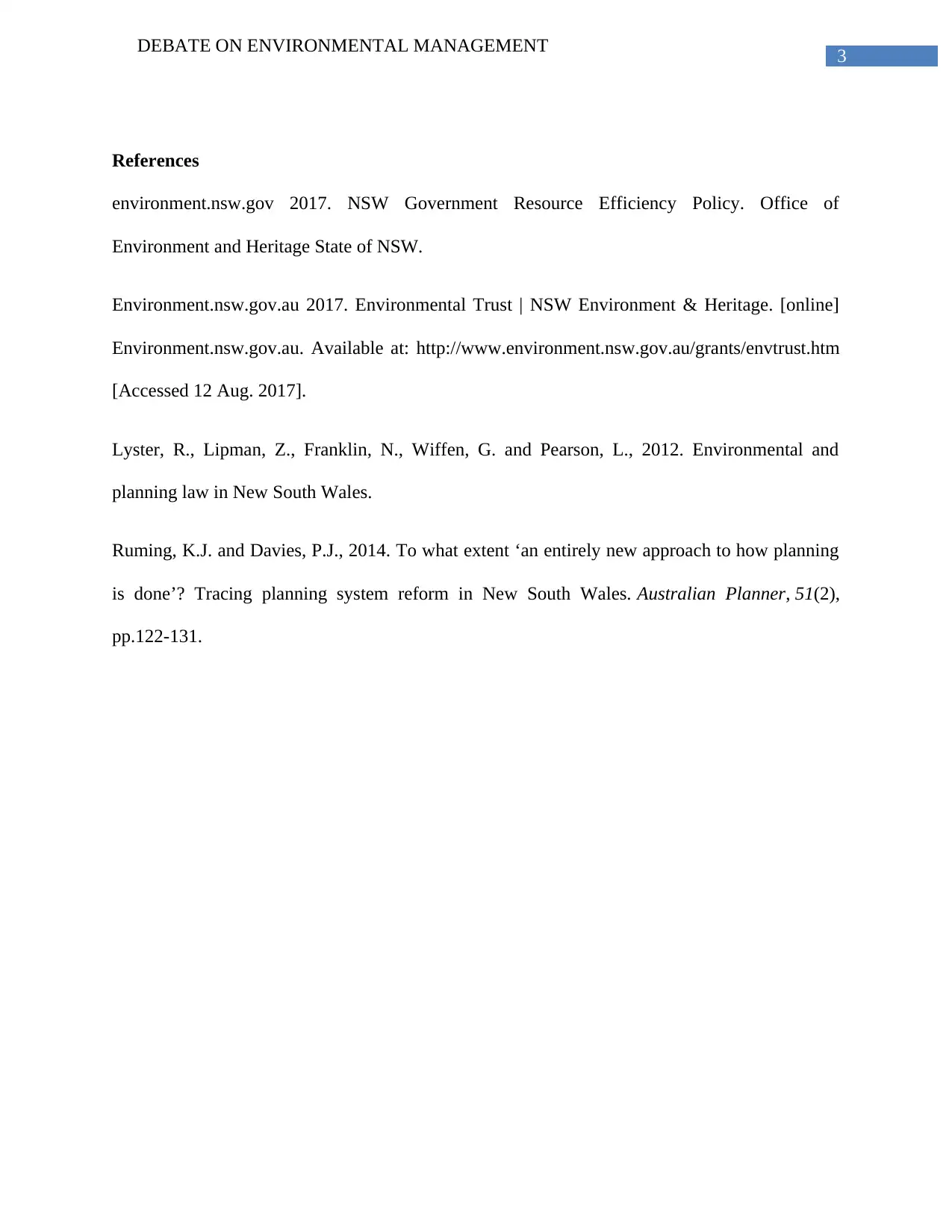A Debate on Environmental Management: NSW Government Policies and Laws
VerifiedAdded on 2020/03/13
|4
|774
|38
Essay
AI Summary
This essay provides a comprehensive debate on environmental management, specifically focusing on the policies and laws implemented by the New South Wales (NSW) government. The analysis begins by examining the NSW Government Resource Efficiency Policy, highlighting its goals of cost reduction and resource efficiency, while also addressing the challenges faced by government agencies in identifying and executing energy-saving projects. The essay then delves into the feasibility and enforcement of environmental laws in NSW, discussing the role of the Environmental Planning and Assessment Act 1979 and the Land and Environment Court. It also addresses the challenges of public understanding of environmental laws, the high costs associated with testing for pollutants, and the limitations in enforcing violations. The essay incorporates references to relevant government documents and academic research to support its arguments and provides a balanced overview of the complexities surrounding environmental management in the region.
1 out of 4











![[object Object]](/_next/static/media/star-bottom.7253800d.svg)